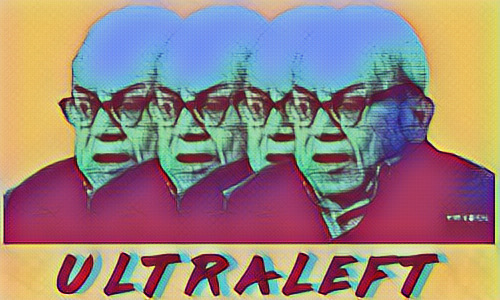Collective of Econauts
If we can’t switch from seeing the image of a rabbit to seeing also the image of a duck— if we can’t move from seeing the face of the human Other, which philosopher Emanuel Levinas considers the ground of all ethics, to also seeing the face of the natural Other, the face of the planet—then will we be able to see any face other than our own, or even any face at all?
Let us then think carefully about how concepts drawn from moral and political philosophy can be interpreted to help meet the fundamental ecological challenges of our time. As a starting point, expanding the scope of the norms of right recognition and right relationship involves consideration of two key concepts. These are the concepts of eco-membership and eco-solidarity.
Right recognition involves membership in some kind of common condition or common lot, and it carries with it a claim to what has been called “moral considerability.” This commonality can be invested with particularly human cultural and sociological content, such as kinship or political community, but it can also derive from something more general, such as the condition of being alive. The content of membership recognition is dignity and respect for the integrity of the being—the capabilities and flourishing—of each member.
Membership also involves an equity or parity of voice and participation in the affairs of the entire community, insofar as those affect each member in some significant way. Membership is about each and all. The challenge of reinterpreting and expanding the concept of membership by recognizing non-human beings as falling within its norms is to design human activities in such a way as to make voice and participation for the non-human meaningful in decision-making about human behavior that affects the ecological common good.
How can voice be heard and participation be arranged for non-human members of a community of interdependence and shared vulnerability and need? This is not an unprecedented question because it must also be addressed for human members who are infants or young children, or those with serious cognitive impairment. We do not define them as outsiders or non-members of the moral community due to their distinctive capabilities; we instead seek ways to fulfill their right recognition as members in different ways.
The goal in the case of non-human members who are entitled to right recognition and moral consideration is the same. The key is respect for the inherent requirements and possibilities of flourishing being for each member. In other words, respect involves providing the conditions necessary for the capabilities integral to each member to be realized as effective functioning or activity. This can be true for non-human individuals and species, and for living systems as well.
If membership is right recognition, solidarity is right relationship. It is constituted by the norms of concern and care in common. Membership and solidarity are closely linked, in my view, despite the fact that the paradigm instance of solidarity is often thought to be the support by a member with power for a non-member without power. But that solidarity relationship inherently carries with it and confers recognition and membership upon the less powerful—membership in the newly enacted, now more inclusive moral community. To engage in solidarity is to stand up for those who lack standing and for change that will more fully realize the standing of all. Solidarity is the praxis of standing up and standing beside.
The pathway of moral learning within the practice of solidarity can help us to correct the tendency to see humans as ontologically separate and above nature. Ecological solidarity teaches that nature is the place we live within and not simply the surrounding raw material that we use to fulfill our own desires. Solidarity is essential to counter the desire for control. Solidarity is the counter-sign of power, life’s answering response. Solidarity is the mutuality of concern and care.
As the moral recognition of the Other is altered by this interpretive journey, so is one’s reflexive moral awareness of oneself. In the case of ecological solidarity, strong bonds of attachment with the natural world and care for it may or may not be the result of this journey. But arguably a growth in one’s capacity to project oneself imaginatively into the perspective and viewpoint of the Other and a growth in moral awareness or the ability to see connections previously unseen are plausible outcomes of the interpretive transformation effected by the trajectory of solidarity. I propose the term Collective of Econauts in order to fully express ecosolidarity.
The Collective of Econauts is understood as a voluntary and non-systematic association proposed in contradistinction to the state. The Collective is understood as a relation between ecological beings which is continually renewed by all parties' support through an act of will. The Collective of Econauts requires that all parties participate out of a conscious egoism. Not a selfish egoism but a true “ecoism.” It is a growing of the ecological self, for it brings a sense of our solidarity with all life. As we all journey together navigating life on Earth, we are also joined together as the Collective of Econauts.





Comments
Post a Comment